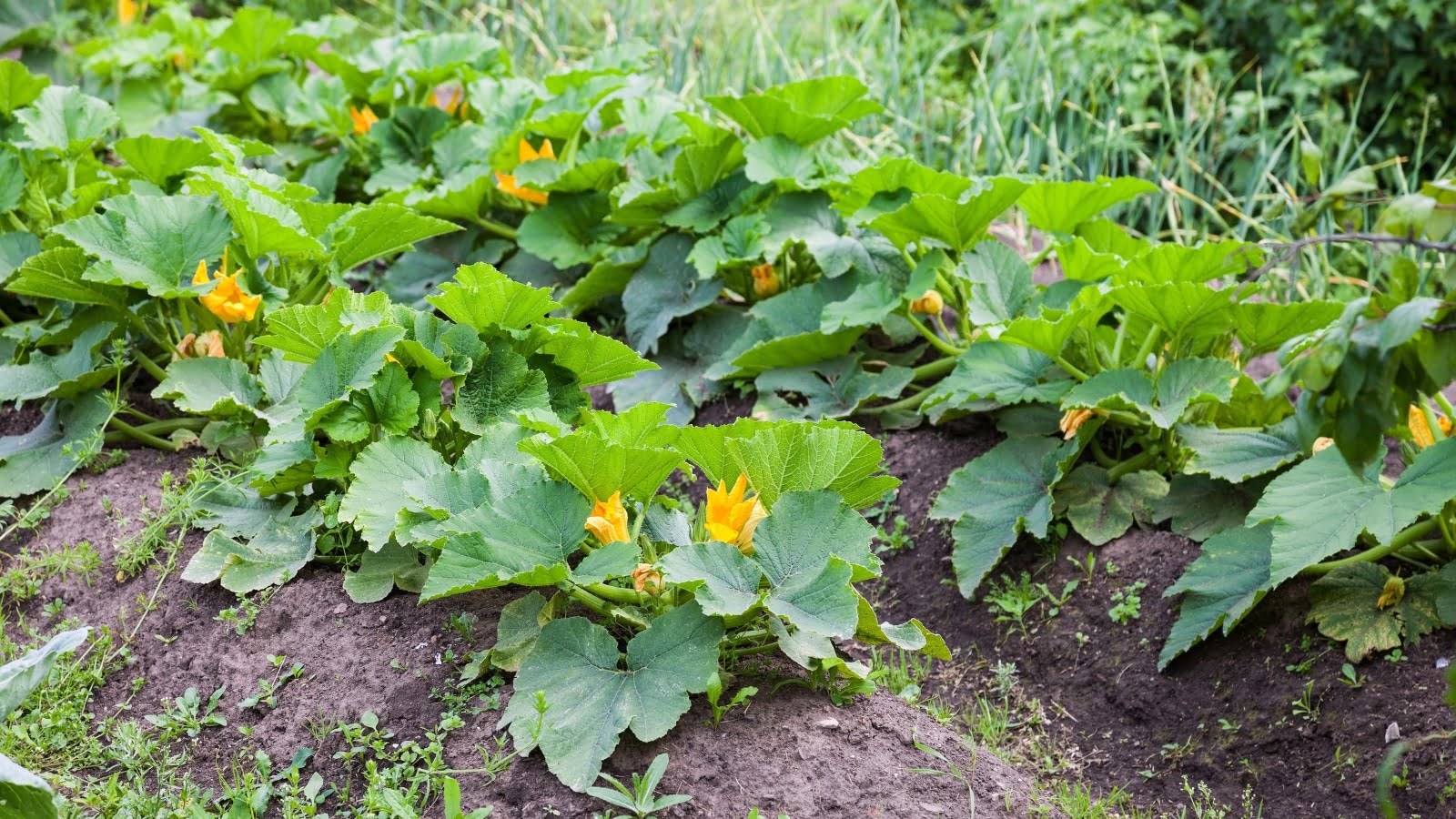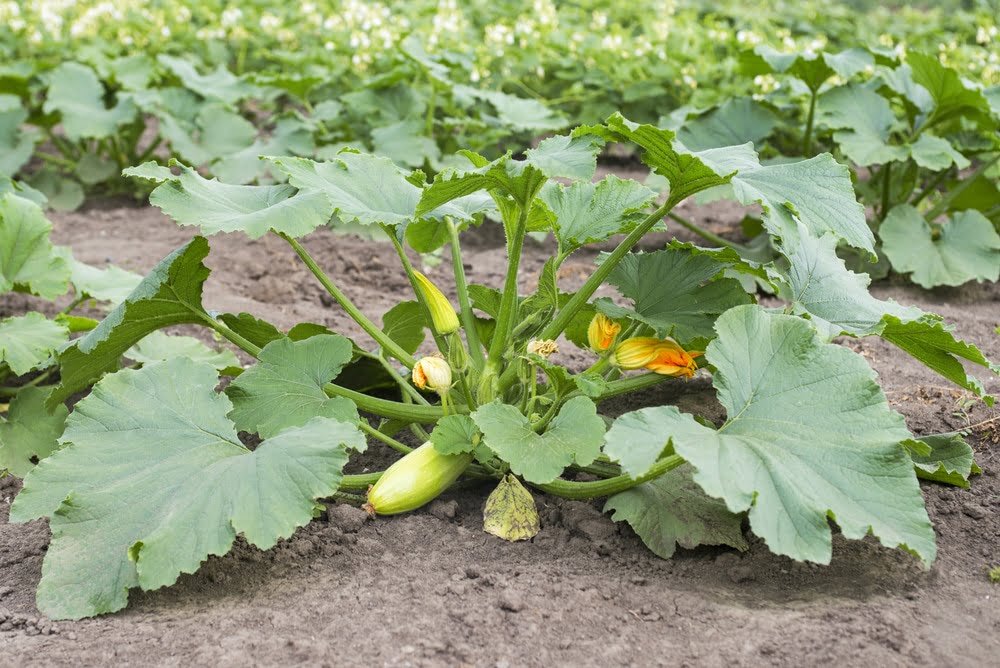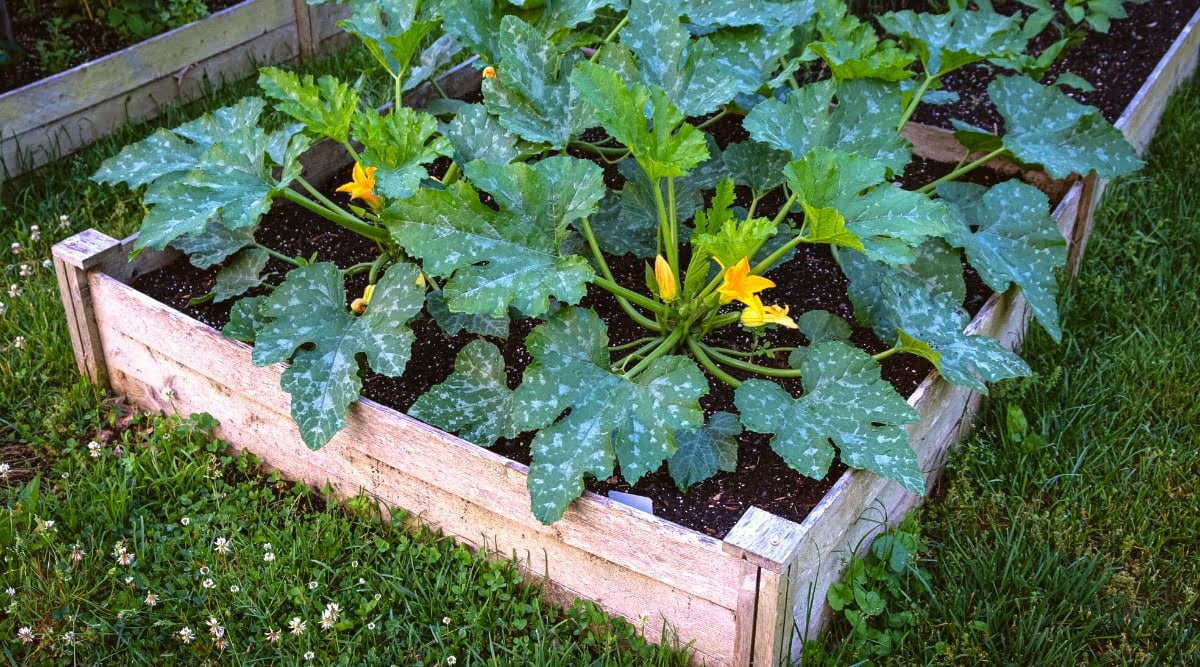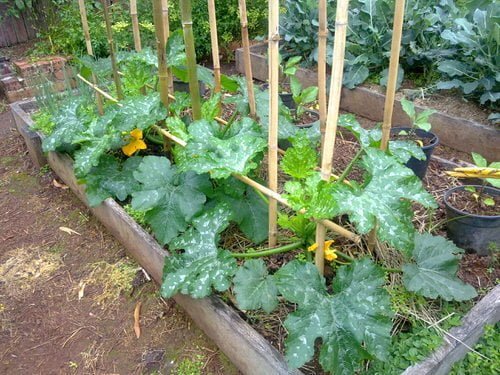In this article, we will explore the fascinating world of zucchini growth and uncover the optimal spacing required for these vibrant vegetables to flourish. Have you ever wondered how much space zucchini plants need to reach their full potential? Well, get ready to discover the answer as we delve into the science behind achieving the perfect conditions for abundant zucchini growth. So, grab your gardening gloves and join us on this horticultural adventure!
Optimal Spacing for Zucchini Growth
Are you an avid gardener looking to grow zucchini in your own backyard? Well, look no further! In this comprehensive article, we will guide you through the factors affecting zucchini spacing, help you determine the right spacing for your zucchini plants, and provide insights into the benefits of proper spacing. Whether you are planting in raised beds, in-ground, or even in containers, we have got you covered. Additionally, we will explore the concept of companion planting with zucchini and highlight the plants that thrive alongside this delicious vegetable. So, roll up your sleeves, grab your gardening tools, and let’s dive into the world of optimal spacing for zucchini growth!

Factors Affecting Zucchini Spacing
Before we delve into the details of determining the right spacing for your zucchini plants, there are several factors that you should take into consideration. These factors play a crucial role in determining the optimal spacing for your zucchini plants and ensuring their healthy growth.
1. Zucchini Varieties: Different zucchini varieties have varying growth habits and sizes. Some varieties are bush-like, whereas others are vining. The size and growth habit of your chosen variety will impact the spacing requirements.
2. Plant Density: The number of zucchini plants you intend to grow in a given area will influence the spacing between them. Crowding the plants may lead to competition for resources and hinder their overall growth.
3. Intended Use of Zucchini: Are you growing zucchini for its small, tender fruit or for larger specimens? The intended use of zucchini will impact the spacing between plants, as it influences their growth habits and fruit quality.
4. Air Circulation and Sunlight: Zucchini plants require proper air circulation and sunlight exposure to minimize the risk of disease and promote healthy growth. The spacing between plants should allow adequate airflow and ensure each plant receives sufficient sunlight.
5. Garden Space and Resources: The available space in your garden, as well as the resources at your disposal, including soil condition and water availability, will also influence the spacing between zucchini plants.
Determining the Right Spacing for Zucchini
Now that we have a clearer understanding of the factors affecting zucchini spacing, let’s explore how you can determine the right spacing for your zucchini plants. Consider the following aspects when planning your zucchini garden:
1. Zucchini Plant Size Considerations: Take into account the growth characteristics and size of the zucchini variety you are planning to grow. This will help you determine the appropriate spacing requirements to prevent overcrowding and maximize yield.
2. Growth Habit and Spreading: Whether your zucchini plants have a bush-like or vining growth habit will play a significant role in spacing. Vining varieties require more space between plants to allow their sprawling nature, while bush varieties can be spaced closer together.
3. Planting for Optimal Yield: To maximize your zucchini yield, it is important to consider the overall health and vigor of your plants. Providing adequate spacing will ensure they have enough room to grow and develop fruit without competing for resources.
4. Fruit Quality and Shape: If you aim for larger, high-quality zucchinis, proper spacing is key. Overcrowded plants can produce smaller and misshapen fruits due to limited access to sunlight and nutrients.

Understanding Zucchini Plant Size
To determine the appropriate spacing for your zucchini plants, it is essential to have a good understanding of the growth characteristics and size of the plants. Let’s dive into the details:
1. Zucchini Growth Characteristics: Zucchini plants are vigorous growers that can reach varying heights depending on the variety and growing conditions. On average, zucchini plants can range from 2 to 4 feet in height.
2. Plant Height and Canopy Spread: Consider the height and canopy spread of your zucchini plants when determining spacing requirements. While some varieties stay more compact, others tend to spread out in all directions, requiring more space.
3. Leaf Size and Plant Vigor: Zucchini plants have large, lush leaves that contribute to their overall vigor. Make sure to allow enough space between plants to prevent overcrowding and discourage disease development due to poor air circulation.
4. Spacing to Avoid Overcrowding: Overcrowding zucchini plants can lead to stunted growth, reduced fruit production, and increased vulnerability to pests and diseases. Proper spacing ensures healthy growth and ample room for harvesting.
Considering Soil and Climate Conditions
Apart from considering the growth characteristics of your zucchini plants, it is crucial to contemplate the soil and climate conditions in your specific gardening area. Here are some factors to keep in mind:
1. Soil Fertility and Nutrient Availability: Zucchini plants thrive in rich, well-draining soil. Consider the fertility of your soil and its ability to provide essential nutrients to the plants. Adequate spacing allows each plant to access the required nutrients without competition.
2. Soil Drainage and Moisture Retention: Proper spacing helps ensure adequate soil drainage, preventing waterlogging and root rot. Moreover, spacing also allows better moisture retention in the soil, reducing the frequency of watering.
3. Temperature and Frost Protection: Take into account your local climate and the temperature requirements of zucchini plants. Spacing can help optimize plant health and provide protection against frost by allowing better air circulation and minimizing cold pockets.
4. Microclimate Variations: Even within the same region, microclimate variations can occur due to factors such as proximity to bodies of water or landscape features. Consider the specific microclimate conditions in your garden when planning for zucchini spacing.
5. Regional Considerations: Different regions have different climate patterns and growing seasons. Research your specific region’s recommendations for optimal zucchini spacing to ensure the best results.

Benefits of Proper Spacing
Why is proper zucchini spacing so crucial? Let’s explore the benefits:
1. Enhanced Air Circulation: Adequate spacing between zucchini plants allows for better air circulation, reducing the risk of fungal diseases. Fresh air can efficiently move through the plants, keeping the foliage dry and preventing the development of leaf-damaging pathogens.
2. Reduced Risk of Disease: Proper spacing significantly reduces the risk of diseases such as powdery mildew and bacterial wilt, which can quickly spread in crowded garden spaces. By allowing sufficient airflow, diseases are less likely to thrive, keeping your zucchini plants healthy.
3. Minimized Competition for Resources: Each zucchini plant requires access to sunlight, water, and nutrients for optimal growth. Proper spacing ensures that plants do not compete excessively for these crucial resources, allowing them to flourish individually.
4. Improved Sunlight Penetration: By providing adequate spacing between zucchini plants, you allow sunlight to reach all parts of the plant, including the lower leaves and the base. This promotes balanced growth and uniform fruit development.
5. Easy Maintenance and Harvest: Proper spacing simplifies maintenance and harvesting tasks. With ample room between plants, it is easier to weed, mulch, and control pests. Harvesting becomes more efficient as each plant can be accessed without damaging neighboring plants.
Spacing Guidelines for Zucchini
Now that you understand the factors influencing zucchini spacing and the benefits of proper spacing, let’s dive into some specific spacing guidelines based on different planting methods and zucchini varieties:
1. General Spacing Recommendations: As a general guideline, zucchini plants should be spaced approximately 24 to 36 inches apart within a row or bed for optimal results. This spacing provides ample room for plant growth and ensures good airflow.
2. Spacing for Bush Varieties: Bush-like zucchini varieties have a more compact growth habit and can be spaced closer together. Aim for a spacing of around 24 inches between plants to maximize yield in a limited garden space.
3. Spacing for Semi-Bush Varieties: Semi-bush zucchini varieties fall between bush and vining types in terms of growth habit. Leave a spacing of approximately 30 inches between plants to accommodate their moderate spreading nature.
4. Spacing for Vining Varieties: Vining zucchini varieties require the most space due to their expansive growth habit. Provide a minimum of 36 inches spacing between plants to allow the vines to spread out without overcrowding neighboring plants.
5. Planting Distance in Rows: If you are planting zucchini in rows, the spacing between rows should be around 48 to 60 inches. This distance allows sufficient access to plants for maintenance and harvesting purposes.
6. Considerations for Succession Planting: If you plan on successively planting zucchini throughout the growing season, stagger the planting dates and provide additional spacing between the successive rows to avoid overcrowding and competition among plants.

Spacing for Raised Beds
Growing zucchini in raised beds offers numerous benefits, including improved soil drainage and easier access for maintenance. Here are some spacing considerations for zucchini in raised beds:
1. Preparing Raised Beds for Zucchini: Before planting zucchini in raised beds, ensure they are well-prepared with nutrient-rich soil and proper drainage. Raised beds can be filled with a mix of compost and organic matter to create an ideal growing environment.
2. Row Spacing in Raised Beds: In raised beds, allow a minimum of 24 to 36 inches between rows to accommodate the growth and spreading of zucchini plants. This spacing ensures each plant has ample room to develop and minimizes competition for resources.
3. Additional Considerations for Raised Beds: While raised beds offer advantages such as better drainage, they can also dry out more quickly. Mulching the soil surface and watering adequately are crucial to maintain soil moisture levels and ensure the health of your zucchini plants.
Spacing for In-ground Planting
If you prefer growing zucchini directly in the ground, consider the following spacing tips:
1. Preparing the Soil for Zucchini: Prepare the soil in your garden bed by incorporating organic matter and ensuring good drainage. Loosen the soil to a depth of 12 to 18 inches to provide ample room for the zucchini plant’s root system to thrive.
2. Row Spacing in In-ground Planting: In an in-ground planting method, maintain a spacing of 24 to 36 inches between rows. This spacing allows proper airflow and prevents overcrowding.
3. Additional Considerations for In-ground Planting: Apply a layer of organic mulch around the base of your zucchini plants to conserve soil moisture and suppress weed growth. Regular watering is essential to ensure the plants receive sufficient moisture, especially during hot and dry periods.

Companion Planting with Zucchini
Companion planting involves growing compatible plants together to benefit both their growth and repel pests. Here are some beneficial companions for zucchini:
1. Beneficial Companions for Zucchini: Planting zucchini alongside companion plants such as marigolds, basil, or borage can attract beneficial insects like bees and predators that help pollination and control pests.
2. Plants to Avoid Planting with Zucchini: Avoid planting zucchini near potatoes, cucumbers, or melons, as they are susceptible to similar diseases and pests. Interplanting these crops increases the risk of cross-contamination.
3. Companion Planting Strategies: When utilizing companion planting with zucchini, consider interplanting rows or alternating individual plants to create a diverse and mutually beneficial garden ecosystem.
4. Beneficial Insects for Zucchini: Encourage beneficial insects like ladybugs, lacewings, and bees to your zucchini garden by providing suitable companion plants and avoiding the use of chemical pesticides. These beneficial insects help with pollination and natural pest control.
With these companion planting strategies, you can enhance the growth and overall health of your zucchini plants while creating a diverse and thriving garden environment.
In conclusion, understanding the optimal spacing for zucchini growth is essential for successful gardening. By considering factors such as zucchini varieties, plant density, intended use, air circulation, and garden space, you can determine the right spacing for your zucchini plants. By providing adequate spacing, you enhance air circulation, reduce the risk of disease, minimize competition for resources, improve sunlight penetration, and make maintenance and harvesting tasks easier. Whether you choose to grow zucchini in raised beds, in-ground, or even in containers, proper spacing plays a pivotal role in their healthy growth. So, follow the guidelines provided in this article, grab your gardening tools, and get ready to enjoy a bountiful harvest of delicious zucchinis!



